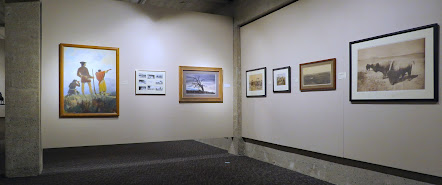Antoine de Vallombrosa, the French Marquis de Mores came to the Dakota Territory in 1883 with a plan to make a fortune in the cattle industry. He bought 44,000 acres of range land, built a slaughter house, and established a town with homes for employees, offices, a hotel, a general store, a brick plant, a school, a Catholic church, and a recreation hall. He thought he’d hit on a brilliant idea – to slaughter the cattle on site and pack the meat on ice in rail cars to be shipped to eastern markets rather than shipping them live by rail to the Chicago packinghouses.
The plan failed for many reasons - fierce competition from major Chicago-based packers, the devastating effects of drought and deep snow in 1886, and the Marquis’s inexperience in business.
The large summer house that the Marquis de Mores, built high on a hill overlooking the Little Missouri River valley and the town of Medora was called a chateau by the townspeople even though it more closely resembles a barracks. The Mores family enjoyed inviting their family and friends to the untamed west for hunting trips and to experience rough living in a rustic setting.
The family used the house for three summers from 1883 to 1886. After his cattle business failed the Marquis returned to France where he became embroiled in political controversies and was murdered in 1889. The family visited the house once after the Marquis death.
In 1921 the eldest son gave the caretaker permission to run a boardinghouse in the chateau so even though it suffered from lack of upkeep the chateau survived while much of the town did not. The chateau was turned over to the state of North Dakota in 1936 on the condition that it be maintained and opened to the public. It was restored from 1937 to 1941 by the Civilian Conservation Corps.
The site includes an interpretive center with exhibits on the Mores family and the Marquis’s cattle business. Exhibits about the Civilian Conservation Corps and Work Projects Administration fill a separate gallery. The chateau is opened for self tours with guides available to answer questions.
The interpretive center is accessible. The chateau has several difficult areas. The path from the parking lot is very steep and uneven. The thresholds at the chateau entry and exit doors, and between the rooms are very high.




















































